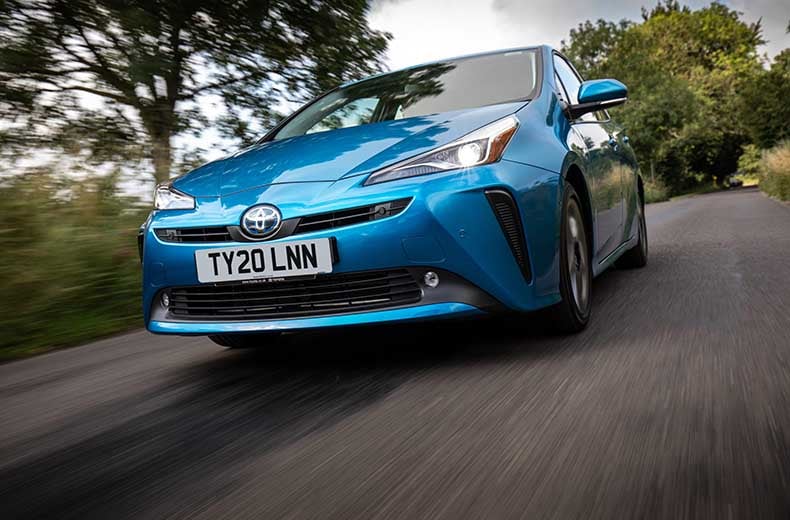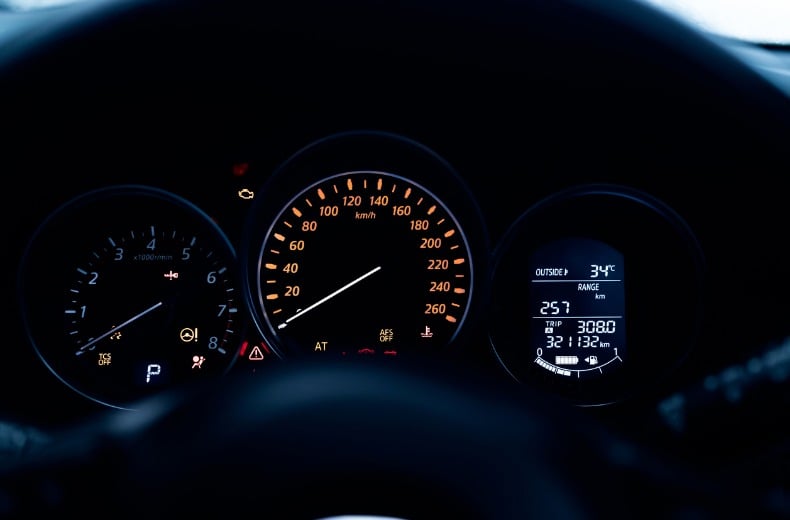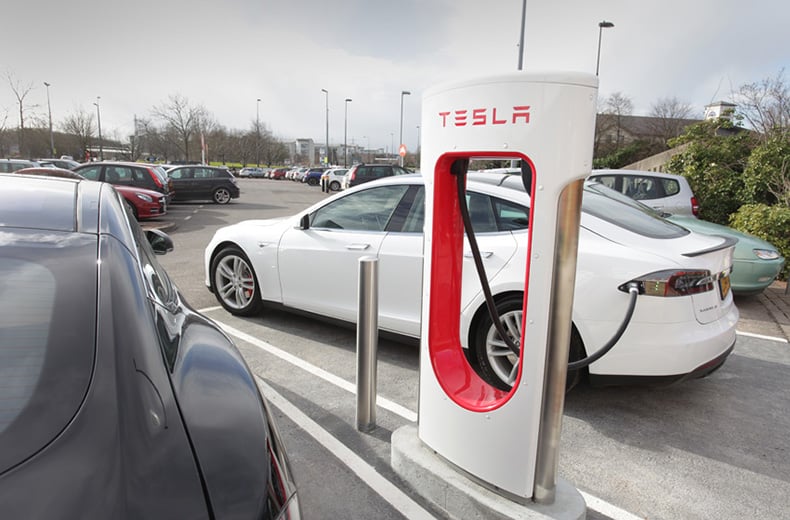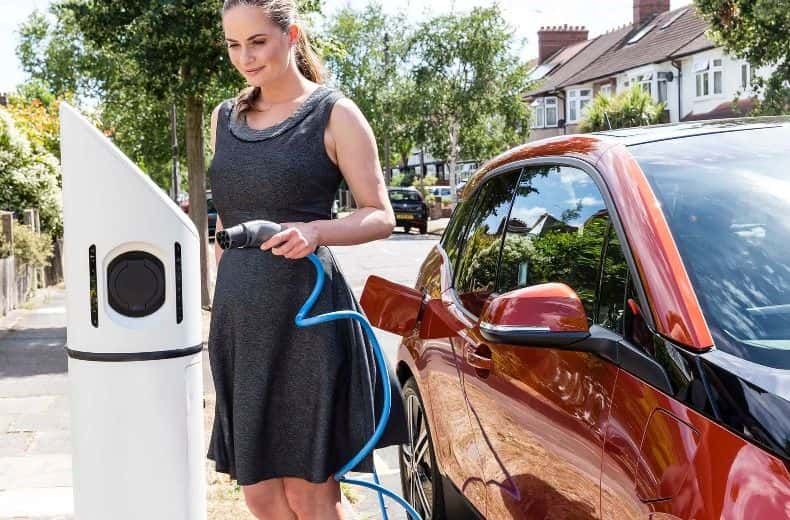Demand for hybrid, plug-in hybrid and electric cars continues to grow significantly each year.
In 2024, sales of pure electric cars grew 21% with 381,970 new EVs sold, while registrations of plug-in hybrids rose by 18% at 167,178 unts. This trend will continue as we head towards the 2035 ban on the sale of new petrol and diesel cars.
To select the best option, you need to understand the differences between hybrid, plug-in hybrid and electric vehicles.
The difference between hybrid, plug-in hybrid and electric cars
In simple terms, a hybrid vehicle (also known as a self-charging hybrid) boasts a small battery and an electric motor to boost efficiency. It requires a petrol or diesel engine as its primary means of propulsion, but a mile or so of pure electric range should be achievable in the city.
A plug-in hybrid goes a step further. It retains a petrol or diesel engine, but a larger battery delivers between 25 and 70-odd miles of electric range, depending on the model.
The battery can be recharged using a home charge point or by taking advantage of the expanding public charging network. You could see plug-in hybrids as a stepping stone towards fully electric vehicles because you’re able to do some driving on electric power, but you still have the safety net of an internal combustion engine to back you up for long journeys.
Finally, an electric car (also known as a battery electric vehicle (BEV) or electric vehicle (EV) relies entirely on a battery pack as its means of propulsion. It must be plugged in when the battery is low on juice.
Remember this rule: in a hybrid you cannot plug in, in a plug-in hybrid you should plug in, and in an electric car, you must plug in.
Hybrid cars

The Toyota Prius is arguably the most famous hybrid car on the planet. Launched in 1997, the world’s first mass-produced hybrid vehicle has become the brand generic for green motoring, loved by everyone from greenwashed celebrities to Uber drivers.
A hybrid car pairs an electric motor with a petrol or diesel engine. It means that the driver has access to three forms of propulsion: by the engine, pure electric or both. When used correctly, a hybrid should be as efficient and economical as an equivalent diesel car - more so in stop/start traffic.
You may have seen cars advertised as mild hybrids. These aren’t electric vehicles in the practical sense – many owners will be unaware that they’re driving a mild hybrid car. A small battery pack with an integrated starter-generator is designed to improve efficiency and to deliver a smooth boost in acceleration, but a mild hybrid can only coast short distances under electric power rather than run solely on it for significant distances.
Hybrid cars: pros and cons
Pros
Familiarity
Familiarity is a key benefit of running a hybrid car. From behind the wheel, you shouldn’t notice much difference or have to worry about recharging the battery.
Efficiency
The electric motor is there to improve fuel economy and overall efficiency, as well as delivering a couple of miles of electric range. A hybrid will be more efficient than a petrol car, and more economical than a diesel in town.
A hybrid system will recharge the battery in one of two ways: by using the internal combustion engine or through regenerative braking. Energy that would have been lost under braking or when lifting off the accelerator pedal is diverted to the battery to power the electric motor. This makes a hybrid ideal for congested city driving.
Tax
There are also tax benefits associated with hybrid cars. Lower CO2 emissions mean lower VED (Vehicle Excise Duty) in the first year, plus an annual saving of £10 per year. Company car tax, while not as low as the rate for pure electric and plug-in hybrid vehicles, will be lower than an equivalent petrol or diesel car.
Towing
It’s also worth noting that hybrid cars are currently the best choice for anyone looking for an electrified car for towing. The maximum towing capacity might beslightly less than in an equivalent petrol or diesel car, but it’s likely to be significantly more than in a pure electric vehicle. Indeed, even in 2024 some electric cars haven’t been granted type approval for towing.
Cons
Cost
It’s not all good news. Hybrids tend to be more expensive to buy than petrol or diesel cars, so the monthly payments will be higher. They can also be less efficient than a diesel car on a motorway, so a company car driver could see the tax savings wiped out by higher fuel bills.
Range
Another factor working against hybrid cars is that they have very limited electric range. This means the combustion engine is still pumping out unwanted emissions once the range is depleted.
Ban
The sale of new hybrid cars is to end in 2035 with the new petrol and diesel car ban, which may limit their appeal. This could be brought forward to the original 2030 date under Labour, and hybrids could well be the target of further exclusions from clean air zones as the Government aims to go carbon neutral by 2050.
- Driving without tax – what's the penalty?
- Car tax bands: a simple guide to car tax
- How to save fuel - the ultimate guide

RAC sale - up to 40% off*
• Standard cover from £5.29 a month*
• We get to most breakdowns in 60 mins or less
• Our patrols fix 4/5 breakdowns on the spot
*T&Cs apply.

Plug-in hybrid cars

A plug-in hybrid vehicle, commonly referred to as a PHEV, uses batteries to power an electric motor (or motors), and either petrol or diesel to power an engine. As the name suggests, the battery pack in a plug-in hybrid can be recharged at home or via the public charging network.
Though not a new concept, plug-in hybrids have grown in popularity over the last decade or so, with the Mitsubishi Outlander PHEV once the UK's best-selling hybrid. Nowadays most brands have got in on the game, with models such as the BMW 330e and Ford Kuga PHEV sitting high up in the sales charts.
Thanks to a larger battery pack, a plug-in hybrid will travel further than a hybrid on electric power. Typically, a plug-in hybrid car should deliver around 30 miles of electric range, but up to 75 miles is possible in some models. Models such as the new Range Rover Sport P460e and Mercedes GLC 300e can hit this figure in official tests.
Plug-in hybrid cars: pros and cons
Some view plug-in hybrids as a convenient halfway house between a conventional car and an electric vehicle, while others see them as an expensive, heavy compromise.
Pros
Backup engine
For now, the petrol or diesel engine should provide electric sceptics with some reassurance, while banishing any lingering ‘range anxiety’ concerns. When the battery has run out, the car switches to the petrol or diesel engine, which is refuelled like a conventional car.
Less fuel consumption
Because a plug-in hybrid car will typically start in electric mode, you could find that you don’t require the engine to complete short trips. Indeed, with the average UK car trip being no more than 10 miles, a plug-in hybrid is likely to remain on electric power more often than not. The engine is there for longer trips.
Tax
Lower CO2 emissions mean the tax benefits are even greater, especially for company car drivers. Cars with lower emissions and decent electric range slot into the lowest BiK (Benefit-in-kind) tax bands, with some plug-in hybrids rated as low as eight percent in 2021/22.
Lower running costs
Aside from the need to plug them in, driving a plug-in hybrid should be as easy as a regular car. The combination of electric and petrol and diesel power delivers improved performance without the high running costs of a fast petrol car. It’s a small thing, but there are no concerns if you don’t have access to a charging point. Simply use the engine until you get home or find a charging station.
Cons
Upfront cost
Cost is one of the major drawbacks of plug-in hybrids, with purchase prices that rival a pure electric car. Take the Hyundai Ioniq. The hybrid costs around £24,000, while the plug-in hybrid and electric versions are priced at around £30,500.
Change in driving habits
You must get into the habit of recharging a plug-in hybrid. If you don’t, you’re simply paying extra to carry an expensive and heavy battery pack, which will make the car less economical to run than a petrol, diesel or hybrid vehicle. A plug-in hybrid car isn’t the best choice if you spend most of your time on the motorway.
Handling
A small point, this one. Although plug-in hybrids tend to be fast in a straight line, with plenty of torque for swift overtaking, the weight of the battery pack can have a slightly detrimental effect on the car’s ride and handling. They’re less comfortable over pitted roads and more cumbersome when cornering.
Limited relevance
Could their lifespan be limited? As advances in battery technology and investment in the charging infrastructure combine to make pure electric ownership a viable prospect for more people, we might see PHEVs phased out in favour of pure electric vehicles.
- How long does it take to charge an electric car? Charging speeds explained
- How much does it cost to charge an electric car?
- The reduced plug-in car grant – which EVs qualify for the £2,500 discount?
Electric cars

After around a century of seemingly slow progress, the electric car has come of age in recent years.
The days of limited electric range, a poor charging network and jokes about the G-Wiz are over, with electric cars fast becoming the most desirable vehicles on the planet.
Tesla helped to kickstart the industry, with most major manufacturers now offering a pure electric car of some description and more than a few pledging to phase out non-electrified models in the coming years.
An electric car features an electric motor (or motors) powered by a battery pack, which can be recharged at home or by using the public charging network. There are more than 70,000 charging points at 35,800 locations as of September 2024, so finding somewhere to charge is getting easier by the day.
How far you can travel on a single charge depends on a number of factors, not least the size of the battery. For example, the 27kWh battery in the Dacia Spring delivers an official l37 miles of electric range. At the opposite end of the spectrum, the 108kWh battery in the Mercedes-Benz EQS 450+ offers up to 452 miles.
The situation is only going to get better as manufacturers come under increasing pressure to reduce CO2 emissions. This, and tightening legislation, will deliver greater choice, an improved charging network and EVs with longer range estimates.
For now, the public charging network should be adequate for most electric car owners, but it makes sense to invest in a home charge unit. As well as being safer than using a domestic plug socket, these units deliver faster charging times and can be set to take advantage of cheaper overnight electricity tariffs.
Electric cars: pros and cons
Pros
Incentives
While initiatives like the plug-in car grant (which gave a substantial discount off the list price of an EV) have now ended, there are still incentives for buying or leasing a new electric car
For example, a grant of £350 is available via the Electric Vehicle Homecharge Scheme when installing a home charger. In 2024 this only applies if you live in a rental property or flat, or if you're a household with on-street parking installing a kerb-side solution.
Landlords and local authorites also get grants for expanding the local charging network, while the Workplace Charging Scheme also covers 75% of the cost of installing chargers at your place of work.
Many companies also offer electric car Salary Sacrifice schemes to their employees. This allows you to lease a new EV through your pre-tax salary, effectively reducing your reported earnings and therefore your tax and National Insurance liability.
Tax
The savings continue after the initial purchase, with electric cars qualifying for free VED and extremely low company car tax.
Thanks to a rate of just two percent for fleet users in 2024, a high-end electric car could be cheaper to run than a diesel supermini. Electric cars are also exempt from the Ultra Low Emission Zone (ULEZ).
Low running costs
An electric car will be cheaper to run than a petrol or diesel car for the majority of people.
This is particularly true if you charge at home and take advantage of special tariffs for EV owners. Some electricity companies offer competitive off-peak rates, allowing you to charge your car fully overnight for a few pounds.
You’ll also benefit from cheaper servicing and maintenance costs since there are far fewer moving parts subject to wear and tear than in an internal combustion engine.
Air quality
Other benefits include zero tailpipe emissions and quieter running in towns and cities. Less tangible, but no less significant, is the sense that you’re doing your bit to improve local air quality.
Driving experience
As for the driving experience, the instant torque makes electric cars responsive and fun to drive. Some electric cars are quicker off the line than a six-figure supercar, but use the acceleration in moderation if you want to stay safe and preserve the car’s range.
EVs also have no gears to worry about, making the driving experience smoother and easier, while the lack of engine noise and vibration makes for a quieter, calmer journey.
Cons
Quoted range
Even under the latest WLTP testing regime, the quoted ranges of electric cars can't be fully relied upon.
The range quoted by the manufacturer should be treated as a guide – you’re unlikely to achieve the official figures in the real world. Cold weather, the use of accessories, topography and driving style are just some of the things that could put a dent in the electric range. Find out more in our guide to EV range.
Upfront cost
Cost is another factor. Although the running costs are lower, electric cars are often (but not always) more expensive to buy than their petrol or diesel counterparts.
Expect to pay around £30,000 or more for an electric car with a decent range and space for a small family, while some upmarket EVs break the £100,000 mark.
The difference between an electric car and an equivalent petrol or diesel car is less when paying monthly, however. There are some competitive leasing deals for electric cars out there right now, with models like the Corsa-e and the MG ZS Electric even beating their petrol equivalents in price.
Charging
Anyone without access to a garage, driveway or off-street parking might struggle to charge an electric car at home, and while the public charging network is getting better rapidly, some areas remain underserved, and there are some reports of inoperative charging units. Public charging is also significantly more expensive than charging at home.
Rate of development
Finally, the rapid rate of progress in the electric car industry means that a new EV in 2024 could be obsolete in just a few years.
This is as much a positive as it is a negative, but you don’t want to be tied into a lengthy finance contract on a car that’s outmoded and worth significantly less than the price you paid for it.
Conclusion
Should you buy a hybrid, plug-in hybrid or electric car? It all depends on your circumstances, so doing some homework is essential. A hybrid is a sensible alternative to a petrol or diesel car, especially for short trips and urban commutes. A plug-in hybrid is an excellent stepping stone to a pure electric car – but you must remember to plug it in.
Advances in technology and new legislation will quickly reduce any current disadvantages associated with electric cars in the coming years. Buy an electric car now and you’ll be ahead of the curve come the 2035 ban on the sale of new petrol and diesel cars.
Still not sure? Check out these EV myths getting busted:
When you’ve made your decision, visit RAC Cars for a wide range of hybrid, plug-in hybrid and electric cars. And remember, RAC has electric car breakdown cover, and our team of mobile mechanics can help with any car repairs.
Should you decide to purchase a hybrid or an electric car, you can easily purchase an EV charging cable from the RAC Shop.

RAC sale - up to 40% off*
• Standard cover from £5.29 a month*
• We get to most breakdowns in 60 mins or less
• Our patrols fix 4/5 breakdowns on the spot
*T&Cs apply.










